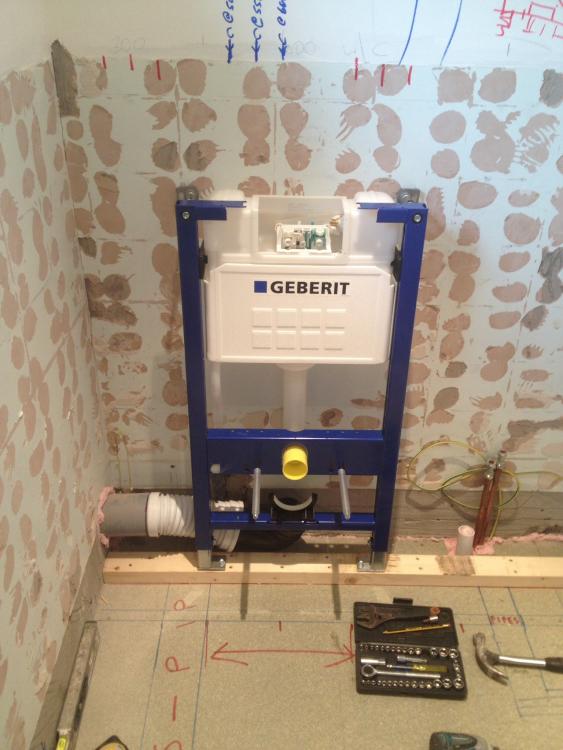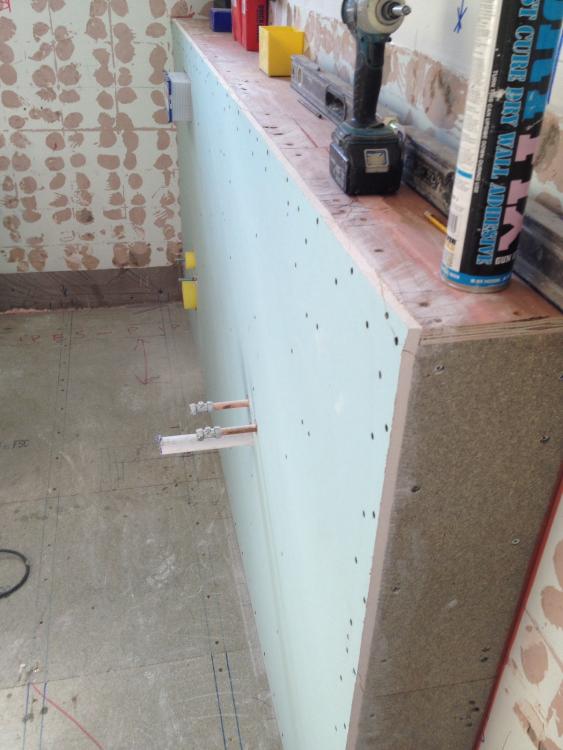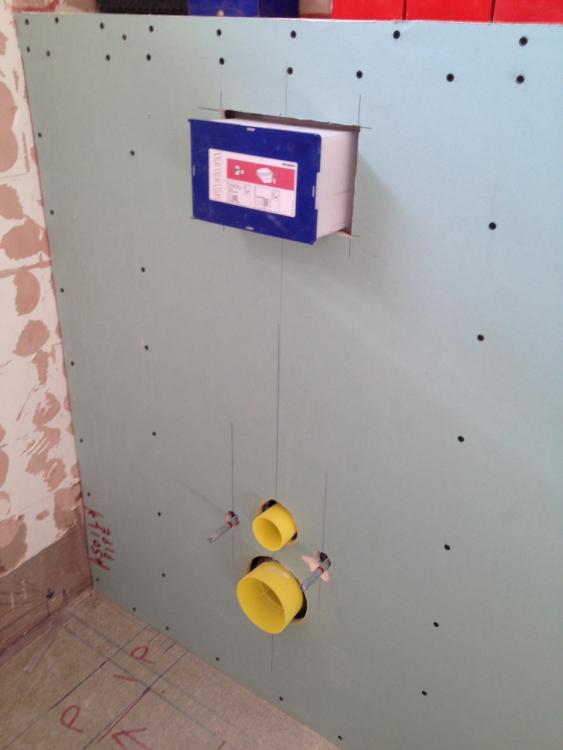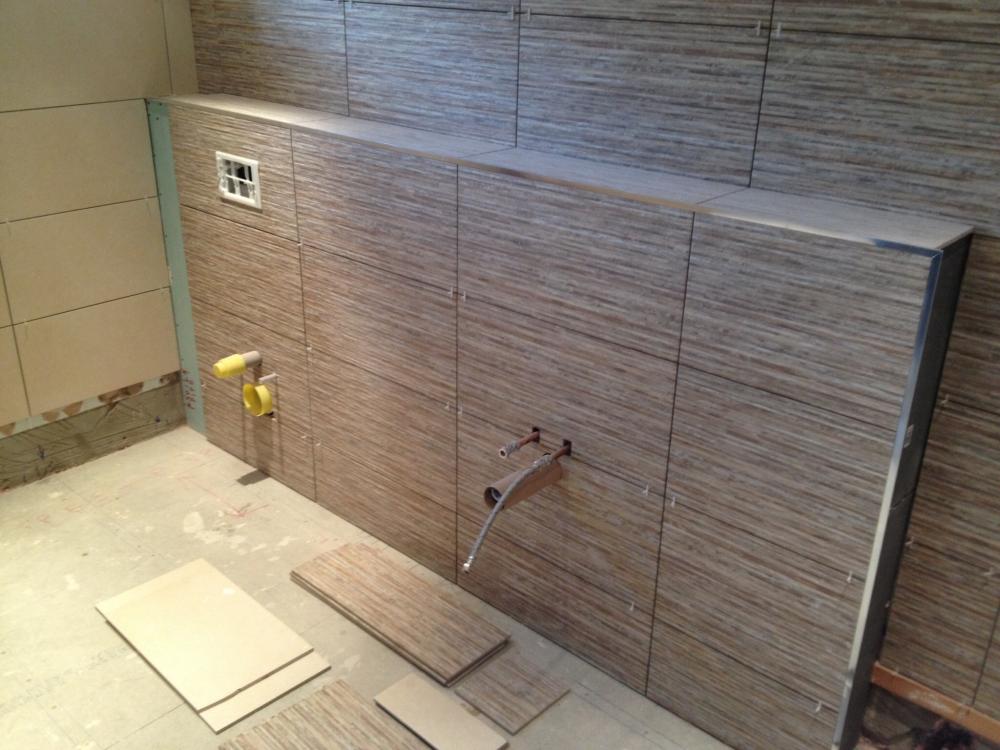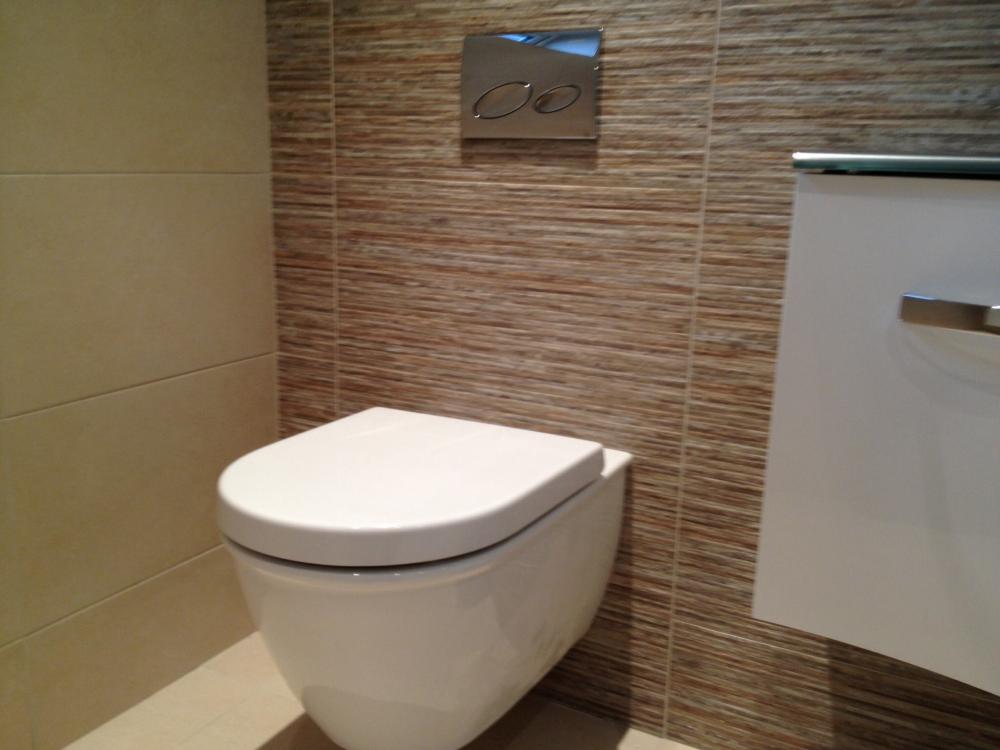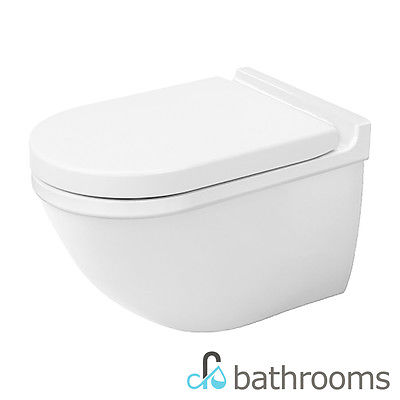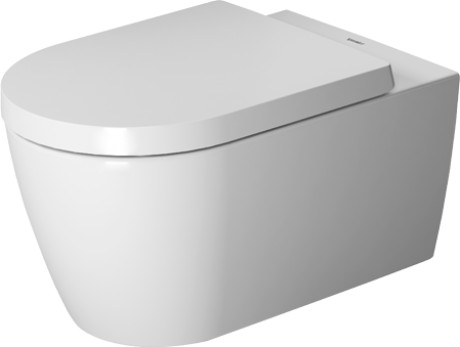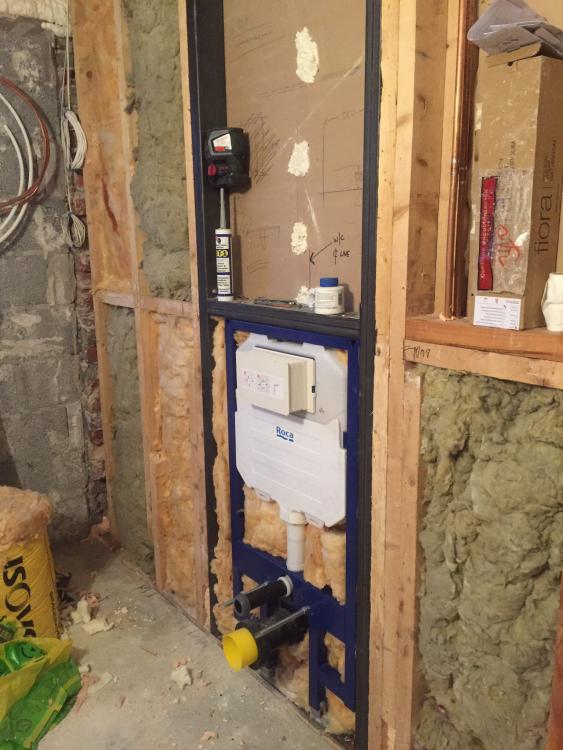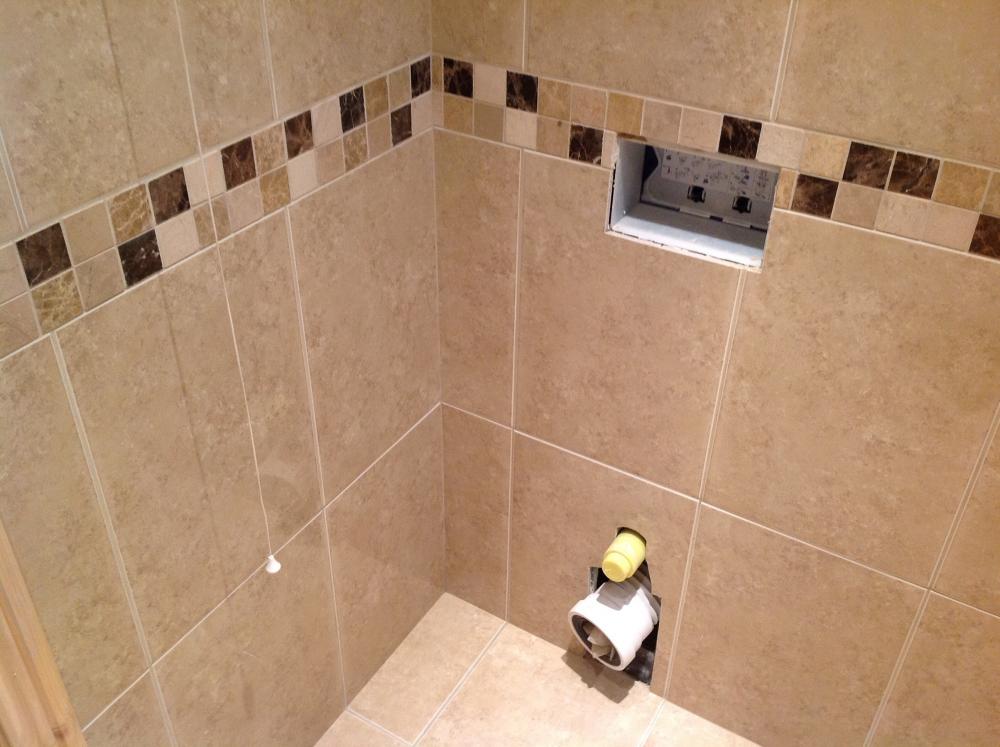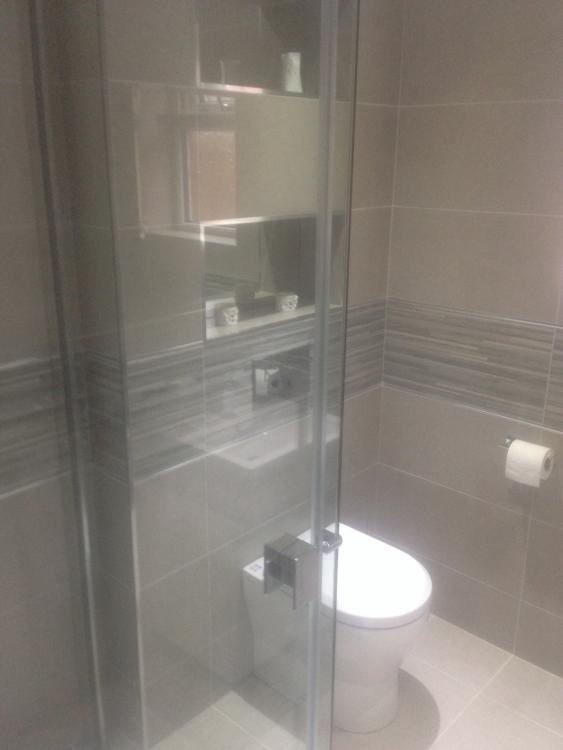Leaderboard
Popular Content
Showing content with the highest reputation on 06/02/16 in all areas
-
2 points
-
A lot of people ask me about the detail of how my house is built so I thought it worth a thread to explain things. First off, I didn't want an "ordinary" timber framed house with a cavity then a brick or block outer skin. That outer skin just costs a lot of money and adds nothing to the insulation of the house, it's just an expensive rain shield. I still wanted the traditional Scottish look of a white rendered finish but I want all elements of the wall make up to add to the insulation and air tightness of the property. The solution is a timber frame, clad with 100mm thick wood fibre external wall insulation boards (I used Pavatex, but other makes are available), and the render goes straight onto the wood fibre board. Here's a picture to make it clear: In that picture I only have a few of the fixing screws in place. A lot more were added and then driven fully home. The board is fixed to the frame with long screws with big plastic spreaders to stop the screws pulling through the board. There are a few twists to the frame however. First thing you will notice is that it is not an "ordinary" timber frame. For a start it's built with much thicker timbers than normal to allow more insulation in the walls. But secondly people keep telling me i have put the frame up "inside out" The OSB racking layer is on the inside of the frame. That's done for vapour permeability reasons with the least vapour permeable layer on the inside. With this build method you can either fill the frame with blown in insulation from the inside once the wood fibre cladding is fitted, or in my case I have chosen to use Frametherm 35 as it's less than half the cost of blown in insulation but gives the same U value. So I am fitting the insulation from the outside as I fit the wood fibre cladding. Insulating only that bit of frame I expect to get clad in that day as I don't want the insulation left exposed to get wet if it rains. The render is a lime based system from baumit.com. It has 3 layers, a base coat that is mixed from dry powder, then a primer that is painted on, then the top coat comes pre mixed in tubs. A fibreglass mesh gets pressed in to the base coat before it is dry. Overall benefits of this approach Vs an ordinary timber frame with blockwork outer skin: Simpler foundations (no need for provision to support the outer brick or block wall) More insulation for a given wall thickness More of the job can be DIY done, perfect for self builders. And an unexpected one, because there is no cavity, there is no need to pepper the wall with weep ventilators, so you get a clean render finish with no "warts" And here is what the finished and rendered front of the house looks like.1 point
-
Hello Everyone, Just started posting on other forum when it finished so am pleased to see this forum flourishing We are on our third self build since 1994 and hopefully the last. Currently have planning permission and looking at options for the build. As a result of the other forum we have had a total change in build method and are likely to be using MBC for passive slab and frame and using wherever possible passive products we can afford. How things have changed since our first build, particularly the red tape, how many more forms do I have to fill in just to demolish the existing cottage? Hopefully will not require much help with issues but at least we now have somewhere to ask questions1 point
-
I've been meaning to write about this for a while, but my experience with an MBC house isn't quite the same as Jeremy's. I know Jeremy's house is in a bit of a micro-climate that encourages overheating. I think a lot of it is to do with our general lack of solar gain, but we've never, ever had an overheating problem (and I haven't yet commissioned the cooling option on our ASHP). The ASHP is also on pretty regularly at a low level when it's very cold. Based on that, I'd just be cautious about assuming that overheating is a given, and that heating inputs will rarely be required. It's similar to the question about bathroom heating - despite a lot of people getting away without it, I was surprised how cool our bathrooms felt, and now wish we'd installed some form of low temp UFH in them. We'll definitely be retrofitting some form of heating (possibly IR-based) to the bathrooms before next winter.1 point
-
My experience has been that the thermo type with the remote sensor that is fitted inside a pocket in the flow manifold seems to allow very good control down to about 24 deg C flow temp, and just about work at 23 deg C flow. In practice I run it at around 24 to 25 deg C flow temp, as that seems to be a reasonable compromise. At that flow temp, with a 70 litre buffer tank at 35 deg C, fed from the ASHP, the UFH seems to be reasonably good at providing the small amount of heat needed in cold weather, but it's worth bearing in mind that even in the very coldest weather we've had over the past year or so I've never seen the UFH come on for more than about an hour or so in the morning, every two to three days. I think it very much depends on your set up and heating requirement as to which thermostatic valve will work best. When I was researching them the three port type were unable to control reliably below about 28 deg C, whereas the 2 port remote head ones seem to work very well at a much lower flow temperature. 28 deg C would have been too high for our system, I'm sure, as ideally I wanted to be able to deliver just a very small amount of heat to the floor, as the house is extremely sensitive to sudden heat inputs, and once it gets a bit too warm it takes a long time to cool down again.1 point
-
Pete, I'm about 12 miles west of the city on the road to Killarney, if ever the urge calls feel free to pop out for a cuppa but bring overalls??1 point
-
Re the pump just make sure it's an A band. Re the sets, I've never had issues with either, but a few on here rave about the thermo type as they appear to give better performance at lower temp.1 point
-
3 way mixer IIRC has a replaceable cartridge - the all in one unit seems to be a weak point if it can't be replaced in the future. Like Jack I can't see the benefit of the Grundfos pump over Wilo1 point
-
Welcome ! Which part of Cork...? I'm down in Clonakilty for work fairly frequently so know the airport well !1 point
-
Is this the choice between Wilo and Grundfos by any chance? If so, I went for the Wilo after a fair bit of research. Only been six months so far but it's still working perfectly and almost completely silent. The pump itself seems a very well made piece of kit.1 point
-
Hi Terry, I used to call their German number and asked if I could speak to someone in English (Koennen sie English sprechen bitte?) - I also have the email of an english speaker that I can share with you by PM. However, you should be able to do a dummy order and get accurate UK shipping costs when you go to the check out stage. When we were looking, I had a spreadsheet of the items and tracked prices from both Reuters and MB and also the stock availability. Reuters can often be cheaper than MB and stock allocation varies so you'll be wanting to prioritise the first fix items (Gebrit frames and iBoxes etc). Both firms let you save the basket which saves typing it all in again. Each have a discount system based on order value, MB's was keener than Reuters. MB will also let you split a delivery if you need immediate shipping of in stock items or you can wait for everything to come in and get it in one lump. Note, the courier (Dascher UK) will deliver by pallet truck and our first box was enormous and very heavy so we had to cover it in tarp to stop it getting wet until we had enough hands to empty it into the house.1 point
-
1 point
-
Thanks. I do a lot of showroom bathrooms so they've been my main bread and butter. I do like fitting kitchens more tbh, and am trying to steer things that way. Just my luck that Ive just taken deposits on 2 bathrooms and a Wetroom . Bugger.1 point
-
1 point
-
Found that photo of the Geberit components: What bit leaked on the earlier Geberit frames then? Vaguely remember something about this on the other forum. Just wondering as these are the UP200 cistern, 0.98m high, 150mm deep frame. (But then I do have the wall depth to cope). Nick, what wall hung wc is that in your post that I just liked?1 point
-
1 point
-
1 point
-
Iirc, @DamonHD is now registered here so maybe he'll offer his opinion when he gets 5 mins1 point
-
Text excerpt. See 4th from bottom for confirmation Application purpose For installation of a wall-hung WC with bolt fixings set at 180 or 230 mm centres For installation in a room-height Duofix system wall in front of a solid or drywall construction For mounting in front of a solid or drywall construction For a screed of 0 - 200 mm (not in room height applications) For connecting Geberit AquaClean Any boarding must be fixed tight up against the face of the Duofix frame and screwed directly to the frame. Characteristics Self-supporting Frame with C profile 40/40 mm Powder-coated frame, ultramarine blue Galvanised leg supports, steplessly adjustable 0 - 200 mm Feet can be retracted 5 cm Rotating foot plate, for installation in UW50 and UW75 profiles Frame with holes ø 9 mm for fastening in wood frame construction Sound-absorbing actuator rods, tool-free, fast adjustment Easy to clean coating on glass and metal Concealed cistern fully insulated against condensation Concealed cistern for tool-free mounting and maintenance Frame height 1120 mm With wall brackets to allow up to a 200 mm duct. For larger ducts up to 400 mm use extension bolts 111.887.00.1 Tool-free fastening for outlet bend, sound-absorbing, adjustable in depth with 8 positions, adjustable range 45 mm Connection hose to angle stop valve can be screwed without tools Water supply connection at centre back or at the top Geberit Sigma concealed cistern 12 cm (UP320) with front actuation Dual flush with Sigma80 touchless, Sigma60, Sigma50, Sigma20, Sigma10 touchless, Sigma01 or Bolero flush plates Single flush with Sigma10 or Tango flush plates Dual flush with pneumatic and mechanical buttons Single flush with touchless flush or pneumatic buttons The protection cover protects the service opening against moisture and dirt and can be mounted without tools and cut to length Universal water supply connection compatible with MeplaFix, can be mounted and operated without tools Self-locking feet for tool-free alignment of the frame, (friction feet have to be locked with spanner) For pans with contact surfaces smaller than 170 mm (see accessory 111.847.00.1) Flush valve features settings to enable either a 6l and 3l flush or a 4.5l and 3l flush. For flush volumes of 4l and 2l a low flush beaker is required (241.894.00.1) Note: must be used with pans designed for low volume flush. The cistern can be operated with used water (rainwater) provided it is passed through a filter system first. Technical data Flow pressure range 0.1-10 bar Operating temperature water max. 25 °C Flush volume small range 3-4 l Flush volume factory setting 5.8 and 3 l Scope of delivery 2 Duofix PreWall brackets for system Water supply connection R 1/2" male BSP parallel thread with integrated angle stop valve and hand wheel Conduit pipe for the water supply connection of Geberit AquaClean Flush bend Protection plug Protection housing for service opening 2 threaded rods M12 for ceramics fastening WC connection set, ø 90 mm WC outlet bend, HDPE, ø 90 mm Adaptor sleeve, HDPE, ø 90/110 mm Fastening material Excluded: Flush plate1 point
-
Whether a single split would be OK depends on the house layout. In our case we have a very high atrium/hall, right up to the ridge height internally, and right in the centre of the house. It's also probably one of the warmest parts of the house. I'm sure a single small split indoor unit placed very high in that space would be pretty effective, as cool air would flow into both bedrooms (if the doors were left open) and down to the whole of the downstairs. Other layouts might not be as conducive to this approach. The duct heater/cooler will be as least as effective as an MVHR with a built in air to air heat pump, I'm sure. Even the smallest ASHP is around twice the capacity of the Genvex and similar systems. The limit isn't the heat pump, it's really the air flow capacity of the MVHR, which isn't enough, in practice, to have a massive effect. The floor is actively cooled, as described in the blog post. The ASHP is just switched to cooling mode and pumps water around the floor at about 12 to 14 deg C, which seems to be about ideal. The floor surface doesn't drop below about 19 deg C, so never feels uncomfortable, the effect is primarily one of drawing away solar gain from the floor before it can heat it up.1 point
-
If anyone is looking at cheaper supply options for Alu soffits and gutters, try MSP Scotland. http://www.mspcladding.co.uk/contacts.html I'm getting my alu cills from them for about half the price the window supplier wanted (fabricated and painted). They recently gave me a price for bespoke alu gutters, but will quote for fascias, soffits, coping etc. If it can be folded they will do it. Ballpark prices seem good as well, at £5 per linear metre for 2mm aluminium, 225mm wide (flat or folded), then a similar amount to paint in any RAL colour, although paint costs come down the bigger the quantity. I spoke to Derek in sales and he was certainly very helpful. I've emailed him to say he may get a few enquiries from forum users so be sure to mention buildhub.1 point
-
I was going to say that I can't see the solder lines on mine without binoculars. But having looked I reckon they are the other type :-). Ferdinand1 point
This leaderboard is set to London/GMT+01:00



.jpg.c21f3ac78c9b7efd90cbdcb312744dc5.thumb.jpg.7adcad4c0e384f5ecd7d56b0618df6e5.jpg)
